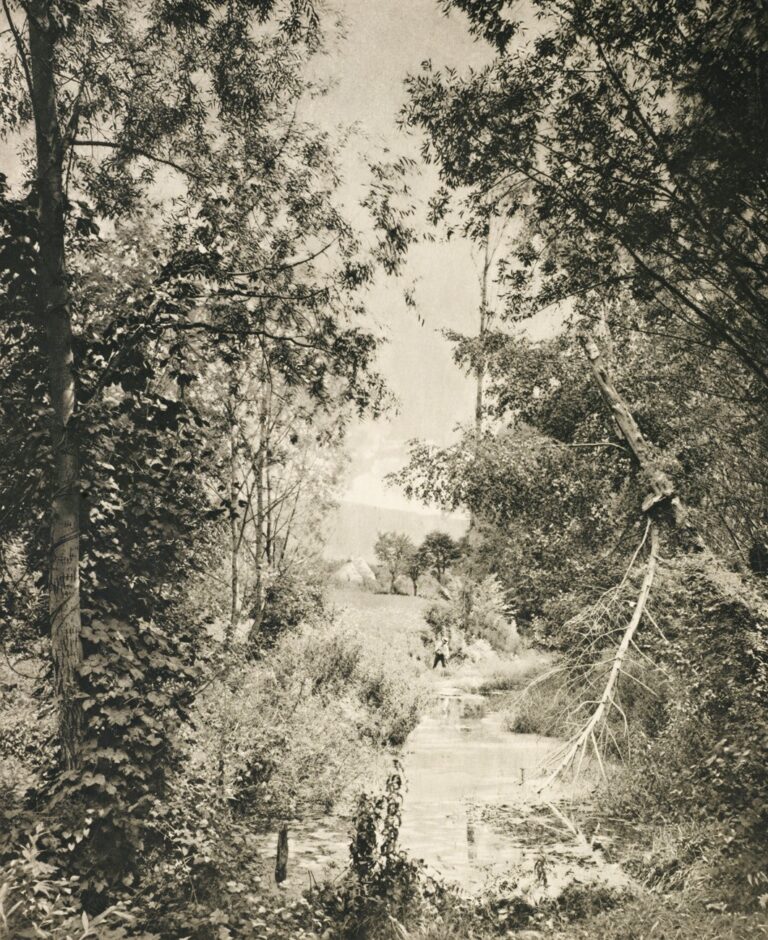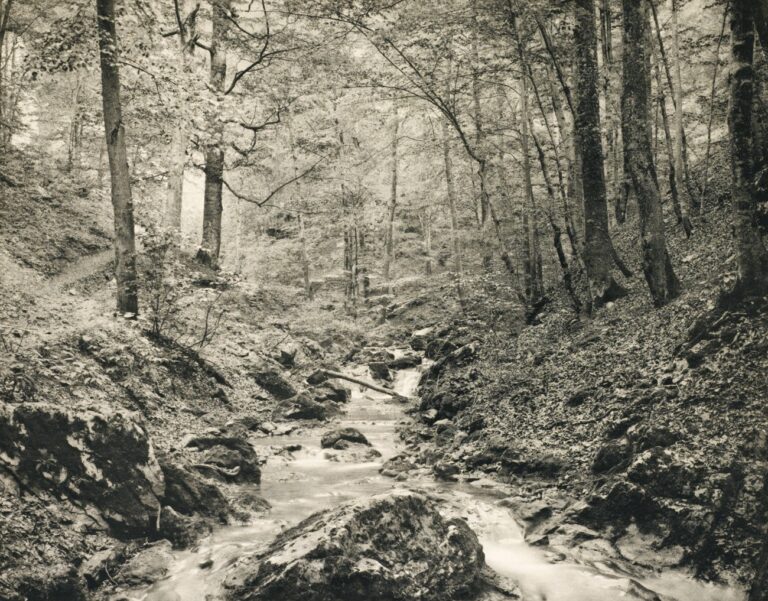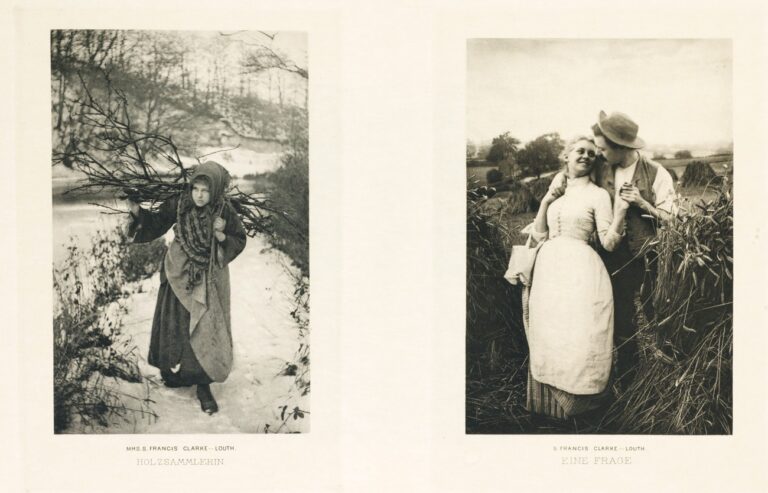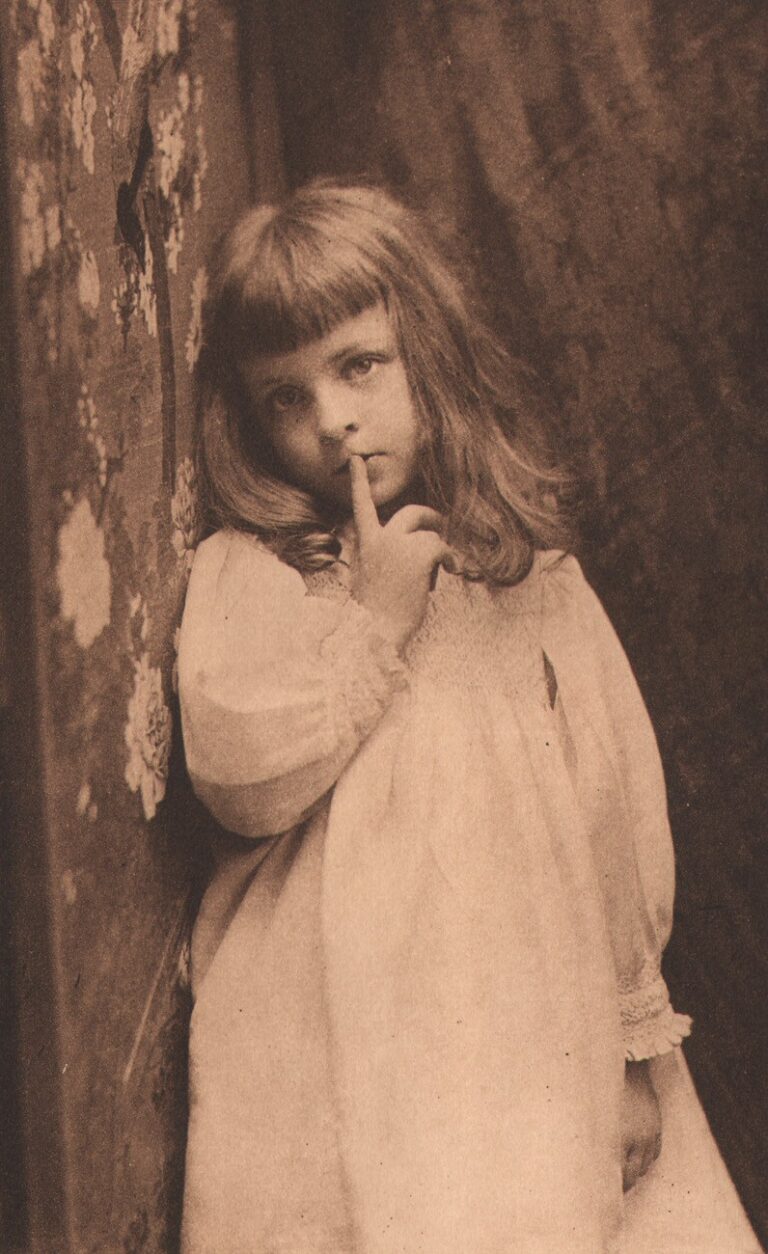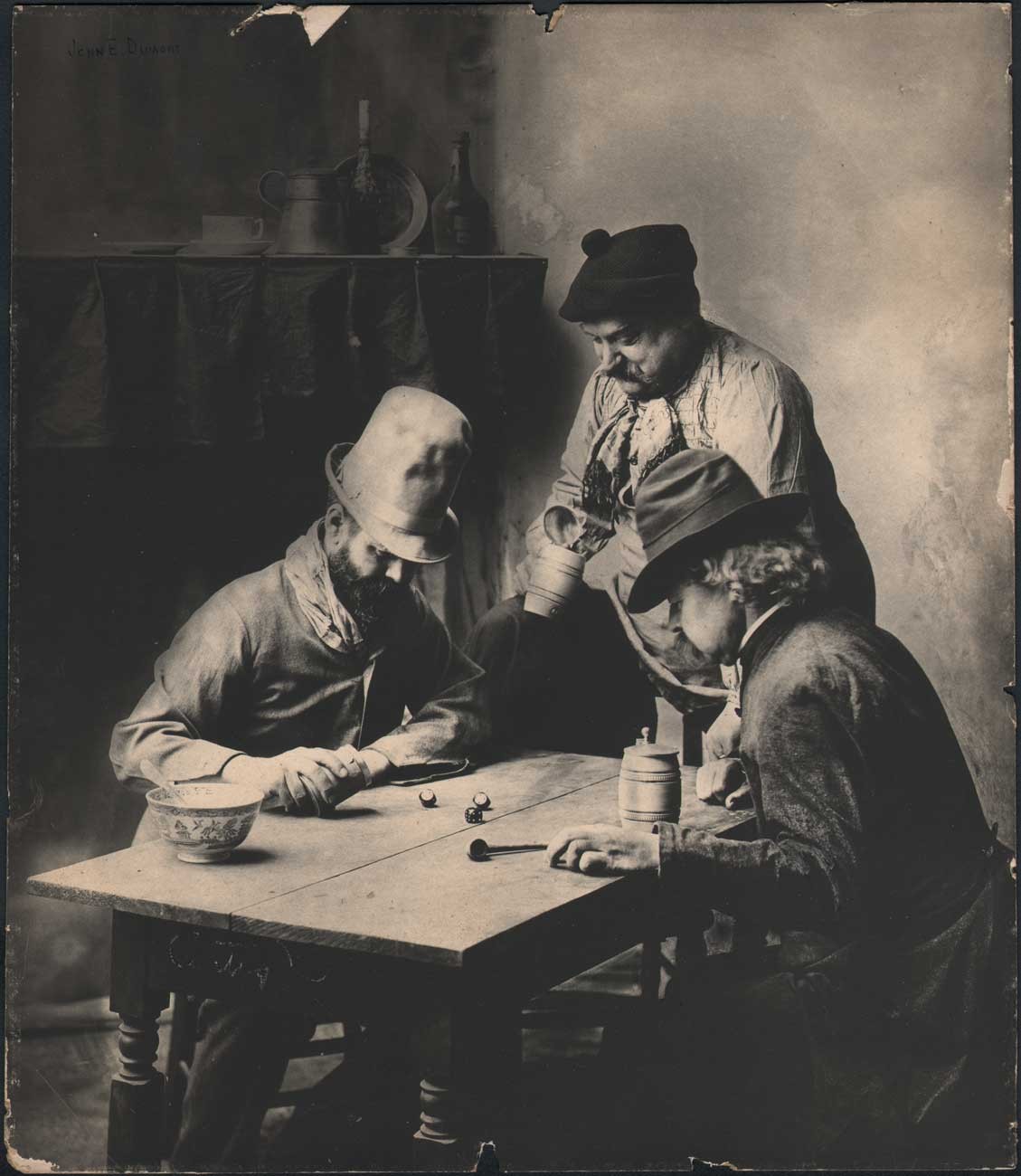
The Dice Players
Rochester, N.Y. Camera Club member John Eignas Dumont, (1856–1944) an important American amateur photographer specializing in genre work, is believed to have taken The Dice Players around 1891, when it was first shown in the annual London exhibition of the Royal Photographic Society. (1.) The same year, the work along with others earned him a gold medal in a contest sponsored by the English journal the Amateur Photographer:
We record with pleasure that our good friend, Mr. John E. Dumont, of Rochester, was awarded the first gold medal for his work exhibited in the “Photography at Home” competition lately held in England under the auspices of the Amateur Photographer. The titles of his prints were: “Fabiola,” “The Bait Question,” “The Formula,” “A Good Hand,” and the “Dice Players.” We congratulate Mr. Dumont on this recent acquisition. (2.)
The composition shows a group of three men playing a dice game with the gentleman at left rolling three dice onto the table from a cup in what may be a variation of the dice con game “Chuck-a-Luck”. The two dice that appear to have landed resting on their edges may be an intentional improbability in the game or merely a visual method used by Dumont to convey motion in the dice.
Dating of this particular print of The Dice Players is most likely a few years after 1897, the year Harvey Ellis designed a variant for copyright of his John Eignas Dumont Ex Libris bookplate label which appears on the verso of this board mounted photograph. (please see link at page bottom for label)
1893 Overview
An early overview of John E. Dumont’s photographic work and awards were outlined in the Troy (New York) Daily Times for their issue of May 27, 1893:
SUCCESS IN PHOTOGRAPHY.
How John E. Dumont of Rochester Became So Renowned as an Amateur Photographer-Honors From Abroad and at Home.
It is many years since the Swedish chemist Scheele (Carl Wilhelm Scheele-1742-1786 who discovered oxygen among other things-editor) first applied combined chemical and spectrum analysis to the science of photography, but comparatively recent have been the experiments which gave the art of picture-taking its greatest development. Its marvelous advancement in the last few years is partly due to amateurs, many of who by patient study and original thought have become experts and authorities on the subject of solar printing. Few amateurs have attained the success which has rewarded the faithful work of John E. Dumont of Rochester, son of General James A. Dumont, supervising inspector general of steam vessels. (he held post from 1876-1903-editor)
A year of discouragement and poor results followed the beginning of Mr. Dumont’s work in photography in 1884. At the end of that year he had decided to give up the task, believing that mastery of the art was beyond his grasp. A friendly critic, however, pointed out the cause of his failure, and when he resumed the work Mr. Dumont began a career which is already rich in results and has won for him a most favorable reputation among the best American amateurs.
His aim is to photograph a subject as a painter would paint it. The photograph, he believes, should be as simple as possible, and to Mr. Dumont’s ability to make his pictures tell their story plainly is attributed his success. Genre work is his specialty. His pictures of this class have received the highest praise from critics in this country and Europe. A faithful art student, he sought the criticism of artists and sculptors, and his methods are governed by the principles on which art is based. In genre work opportunity is give for the display of individuality.
His celebrated picture “Listening to the Birds” received a prize in the genre class at the first exhibition of the society of amateur photographers of New York. Another prize was given for his “Sail,” and for the entire collection Mr. Dumont received the prize for the finest exhibit. The second exhibition of the society witnessed other triumphs for Mr. Dumont. “Listening to the Birds” also received a bronze medal at the first home portraiture competition of the English amateur photographers. Marcus Stone, R.A., acted as judge and later Mr. Stone requested a copy of the picture, stating that he considered it the most beautiful and artistic photograph he had ever seen.
Not counting minor awards Mr. Dumont has also received prizes as follows:
Amateur photographic society of London, 1885-Silver cup and medal.
Philadelphia exhibition, 1883-Diploma (sic-1893-editor)
Second competition of Amateur photographers, London, 1887-Silver medal.
International exhibition, London, 1886-Medal.
International exhibition, London, 1887-Medal.
Photographic society of India, Calcutta, 1889-Bronze medal.
Royton, England, 1890-Certificate in the champion class.
Photographic society of India, 1892-Special gold medal, presented by his highness the Maharaja Bahadur of Tipperah.
Cardiff, 1891-Bronze medal.
Frank Leslie’s Illustrated Newspaper, first competition second prize-$100.
Frank Leslie’s Illustrated Newspaper, second competition, second prize-$100.
Amateur Photographers’ contest for previous winners, London, 1891-First. gold medal.
Mr. Dumont received the grand diploma for six of his pictures at the Vienna salon, 1891, and has at various times won prizes for genre work, for landscapes, for maine and for snow scenes-a surprising range of excellence for any one man.
In addition to the above at the invitations’ exhibition of the London camera club held in the fall if 1892 three of Mr. Dumont’s pictures were accepted and hung, no prizes being given. It was considered the highest possible honor to have one’s pictures hung. At this exhibition all of the leading English newspapers gave Mr. Dumont’s pictures the very highest praise. At the exhibition of the photographic society of Philadelphia during the latter part of April, Mr. Dumont’s pictures were awarded the society’s silver medal, the judges stating that his pictures were the finest in the entire exhibition.
The three “half-tone” reproductions of photographs made expressly for the Troy Times (photos are “Resting by the Way Side”, “Just Like a Mule” and “A Prospective Dinner”-editor) by Mr. Dumont and published in this issue, will be received with marked favor by our readers. Photography with Mr. Dumont is entirely a pastime, as he is actively engaged in business. He is entitled to extra praise for his success, as it is only at odd times that he is able to make a picture, and he frequently goes for six months without exposing a plate.
print details: recto: chipping along all margins with several pieces missing. Signed in black ink at upper left corner: John E. Dumont
print details: verso: pasted Harvey Ellis (1852-1904) designed Art-Nouveau style label of woman holding up a glass plate negative in darkroom by noted American artist/architect and Gustav Stickely mission furniture designer. label: 7.0 x 4.5 cm | border impression: 3.4 x 1.3 cm
provenance: former Rochester, N.Y. estate affiliated with Rochester Camera Club.
1. Dumont, although not a member of the RPS, exhibited his work in their annual salons from 1885-1898.
2. see: Anthony’s Photographic Bulletin: New York: November 14, 1891: p. 644
